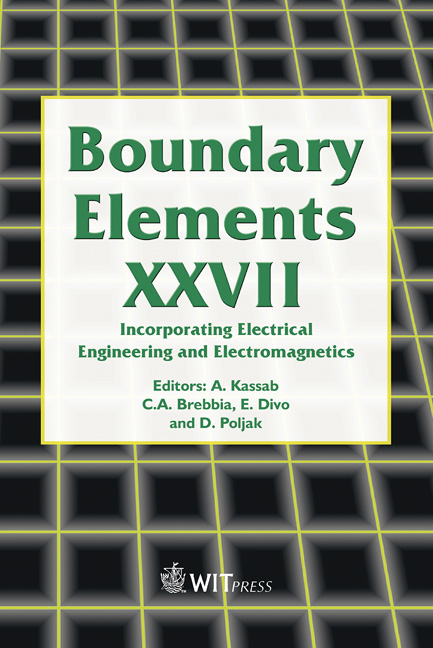Numerical Calculation Of Magnetic Dissipation At Power Transformers
Price
Free (open access)
Transaction
Volume
39
Pages
11
Published
2005
Size
659 kb
Paper DOI
10.2495/BE050621
Copyright
WIT Press
Author(s)
V. Madžarević, A. Muharemović, A. Nuhanović & H. Salkić
Abstract
The analysis of the power transformer electromagnetic dissipation has been based on the analysis of electromagnetic process distribution in the stationary regime. The finite element method was used in the area of the numerical calculation of magnetic field. The 2D calculation of magnetic field distribution in transformers was realized through the application of the FEM2D software. From the numerical calculation of the magnetic field, the dissipating inductivity is calculated through the application of the energy method and the linked fluxes method. Based on the laboratory measures conducted on the model of a low-voltage transformer, the values of the numerical calculation have been provided. Results of the numerical calculation of the dissipating inductivities were compared to the measured values obtained in the short circuit regime with the application of very precise instrumentation. Some proportional deviations were noted. Conducted analysis on the numerical calculation of magnetic dissipation from the point of data accuracy, and complexity of the calculation brings the energy method into first place. The acceptable results have also been exercised with the linked fluxes method. Keywords: magnetic dissipation, dissipating inductance, dissipating fluxes, method of finite elements, method of flux linkage, energy method. 1 Introduction The numerical methods of determining the magnetic dissipation for different positions and shapes of windings and magnetic core are very often used by the constructors in the transformers manufacture. Special attention during the
Keywords
magnetic dissipation, dissipating inductance, dissipating fluxes, method of finite elements, method of flux linkage, energy method





